Hinge Size Guide: Everything You Need to Know About Hinge Types & Sizes, How to Measure & Use Them? (Get Detailed Hinge Size Chart Inside)
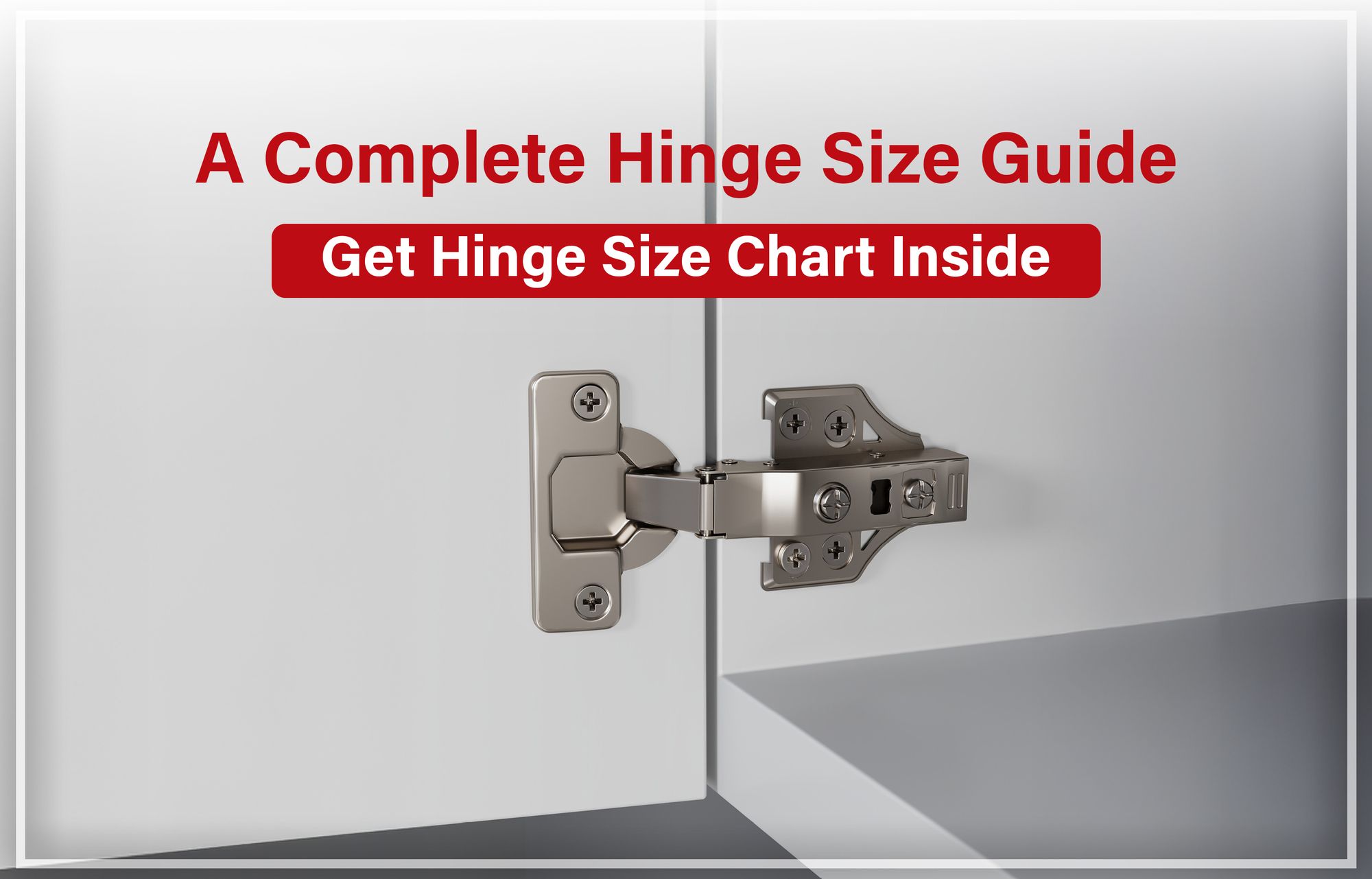
When it comes to doors and cabinets, hinges rarely get the spotlight. But ask any contractor, builder, or even a serious DIYer, and they’ll tell you that choosing the right hinge size can make or break your installation.
A well-sized door hinge ensures smooth door operation, prevents premature wear, and supports long-term performance, especially in commercial spaces with high traffic. On the flip side, the wrong hinge size can lead to sagging, alignment issues, and even structural damage over time.
You could be sourcing hardware for a multi-unit commercial build or replacing a kitchen cabinet hinge at home, understanding hinge dimensions and load requirements is essential. In this guide, let us walk you through key sizing concepts, explain how to read a hinge size chart, and share tips that go beyond what typical buying guides offer.
Which are the Different Types of Hinges and Where They’re Used?
Choosing the right hinge boosts performance, durability, and ensures the hardware functions reliably over time. Below is a breakdown of the most commonly used hinge types, how they’re applied, and where you’re most likely to find them.
Butt Hinges
A workhorse in door hardware, butt hinges are the most commonly used type for both residential and commercial settings. They are recessed into the edge of the door and frame, offering a clean finish and solid performance.
- Mortised into both the door and frame for a flush fit.
- Available in plain bearing, ball bearing, and spring-loaded styles.
- Ideal for most standard doors, including fire-rated and solid core types.
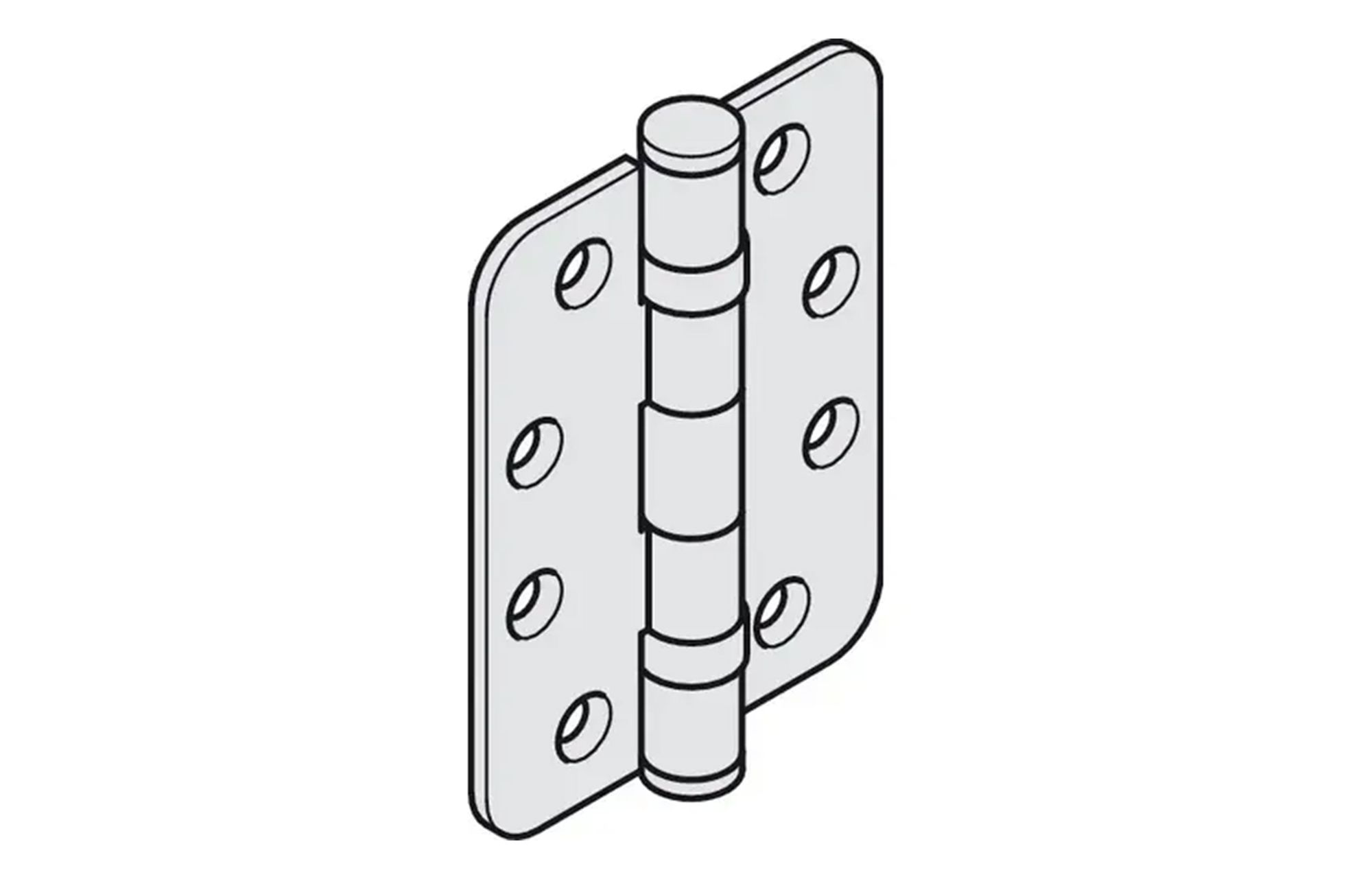
Concealed (European) Hinges
Used mostly in cabinets, these hinges stay hidden from view when the door is shut, giving furniture and kitchens a sleek & modern appearance..
- Typically use a 35mm cup and allow 3-way adjustments.
- Suitable for modern kitchens, offices, and modular storage.
- Available in full overlay, half overlay, and inset configurations.
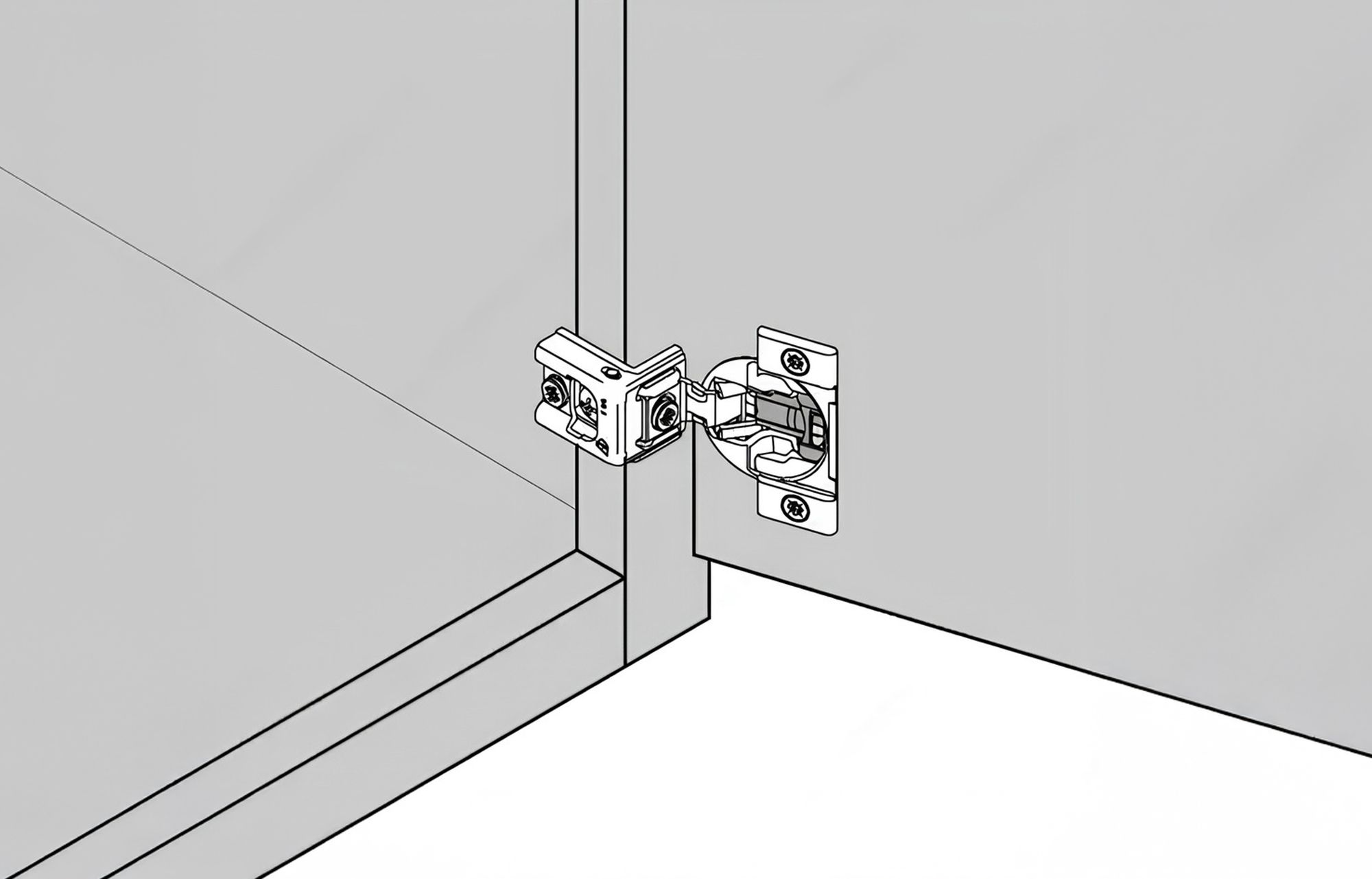
Piano (Continuous) Hinges
True to their name, these hinges span the entire length of a door or lid. They provide uniform support and are a go-to choice for high-use or heavy applications.
- Run the full height or width of a door or panel.
- Provide continuous load support and enhanced stability.
- Cut-to-fit options available for custom applications.
- Common in schools, hospitals, and industrial equipment enclosures
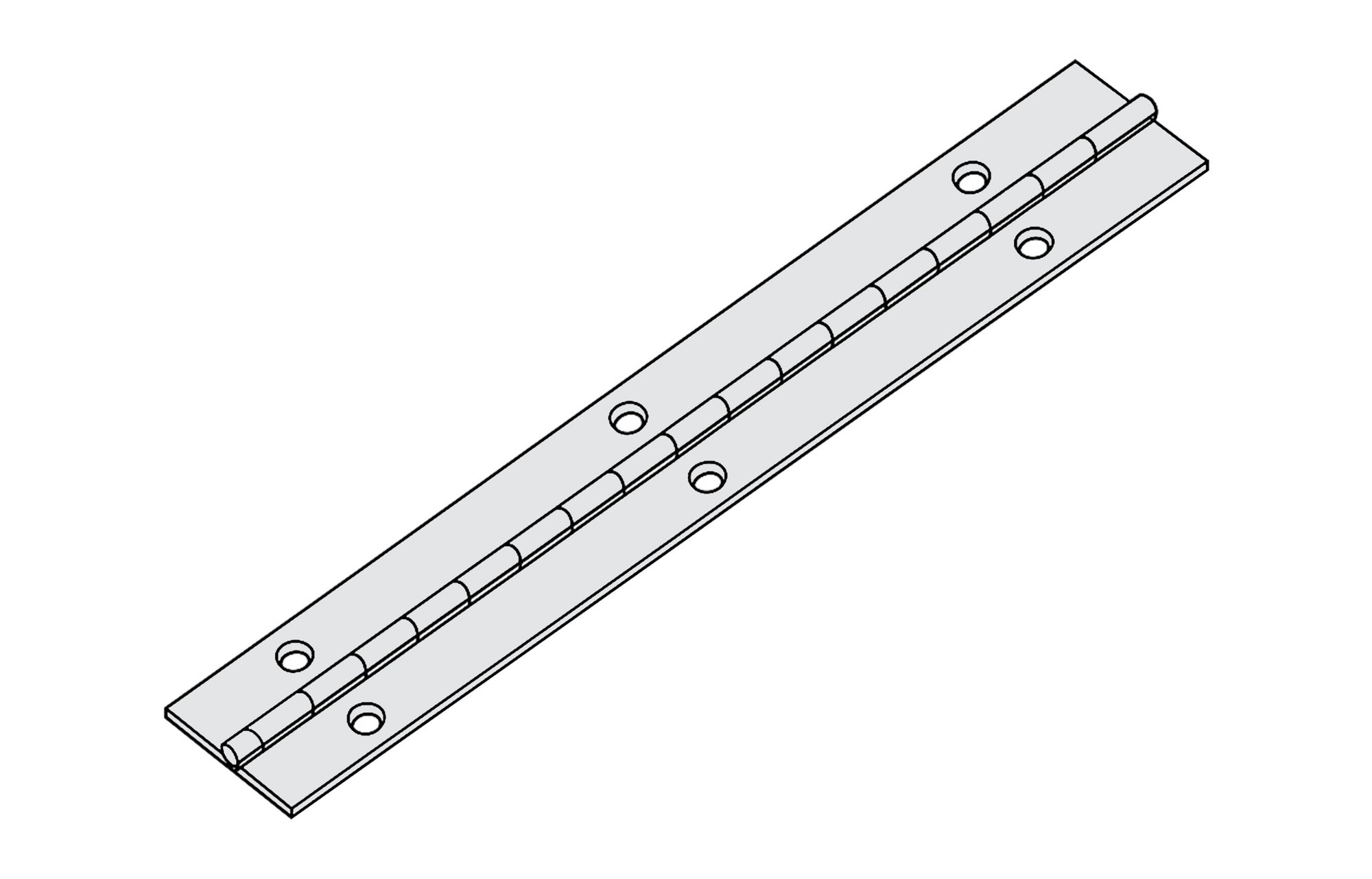
Strap and Tee Hinges
With their elongated arms and aesthetic appeal, these surface-mounted hinges are a staple in rustic or utility-focused installations.
- Surface-mounted with decorative, elongated leaves.
- Available in heavy-duty gauges for outdoor or wide gates.
- Offer easy installation and strong visual presence.
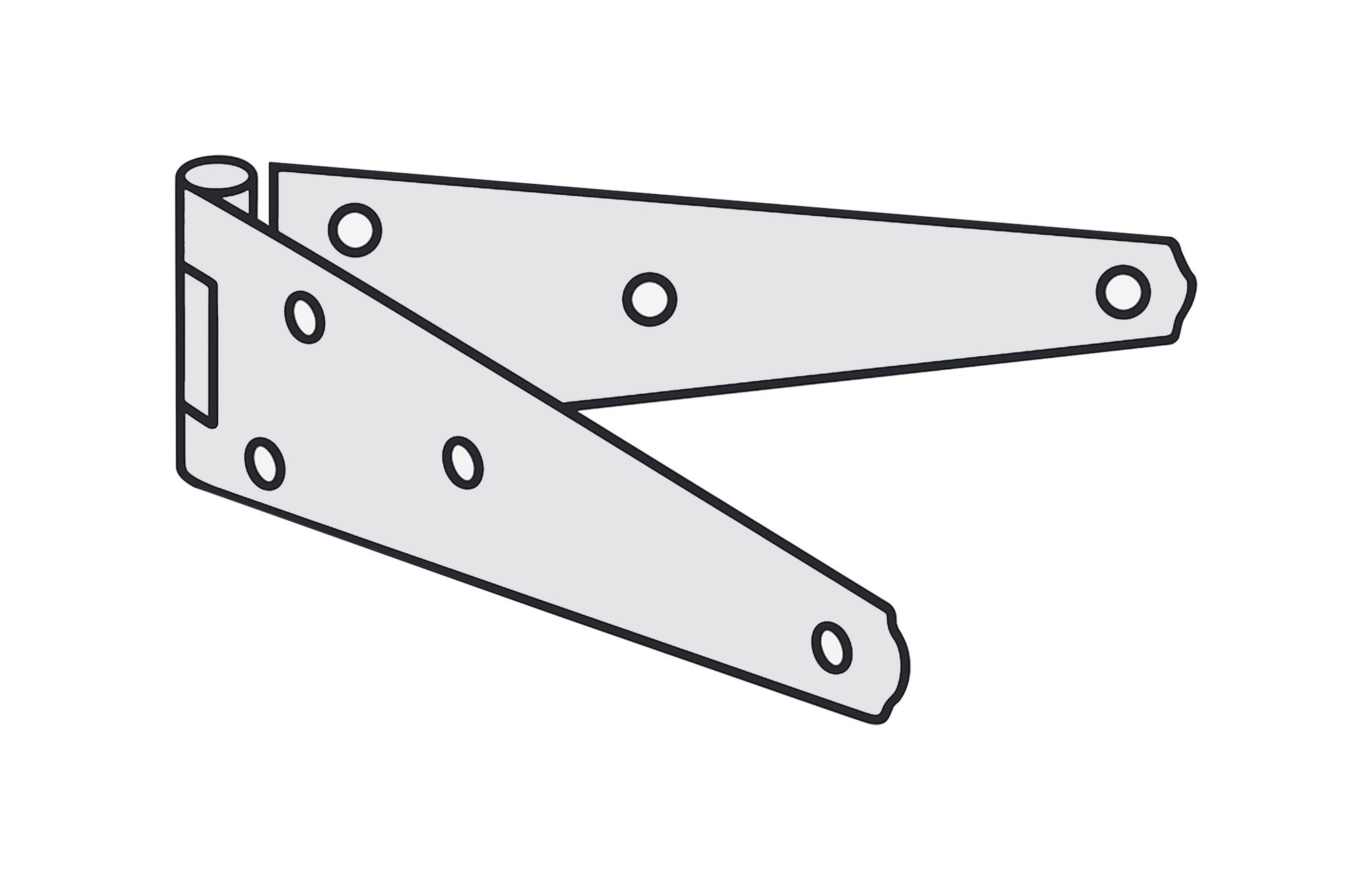
Each hinge type brings a unique advantage to your project. Whether you're specifying for a commercial renovation or sourcing hardware for a high-end residential build, knowing which hinge fits the job ensures smoother installation, better function, and long-term reliability.
How to Measure a Hinge?
Getting the measurements right is critical to ensuring your hinge fits and functions properly. Unlike many hardware components, hinges rely on exact dimensions to align doors and provide adequate support.
Here’s how to measure a hinge accurately:
Key Hinge Measurement Terms
Hinge Height
The vertical distance from top to bottom when the hinge is standing upright. This is the first number you’ll see in a size listing (e.g., 4" x 4").
Open Width
Measured with the hinge fully open, it's the distance across both leaves laid flat, from outer edge to outer edge. It includes the pin.
Leaf Width
Half of the open width, measured from the center of the pin to the outside edge of one leaf.
Gauge (Leaf Thickness)
The thickness of each leaf. Thicker gauges support heavier doors but may require deeper mortising.
Knuckle Length
The height of each barrel section. While mainly aesthetic, it can affect clearance and fit in some specialty hinges.
Pin Diameter
Refers to the thickness of the central pin. On heavy-duty or ball-bearing hinges, a thicker pin usually indicates stronger performance.
Radius Corners
Common in residential hinges, these are rounded corners that match router-cut mortises. They typically come in 1/4" or 5/8" radius. Use a dime or a quarter to determine which radius your hinge has.
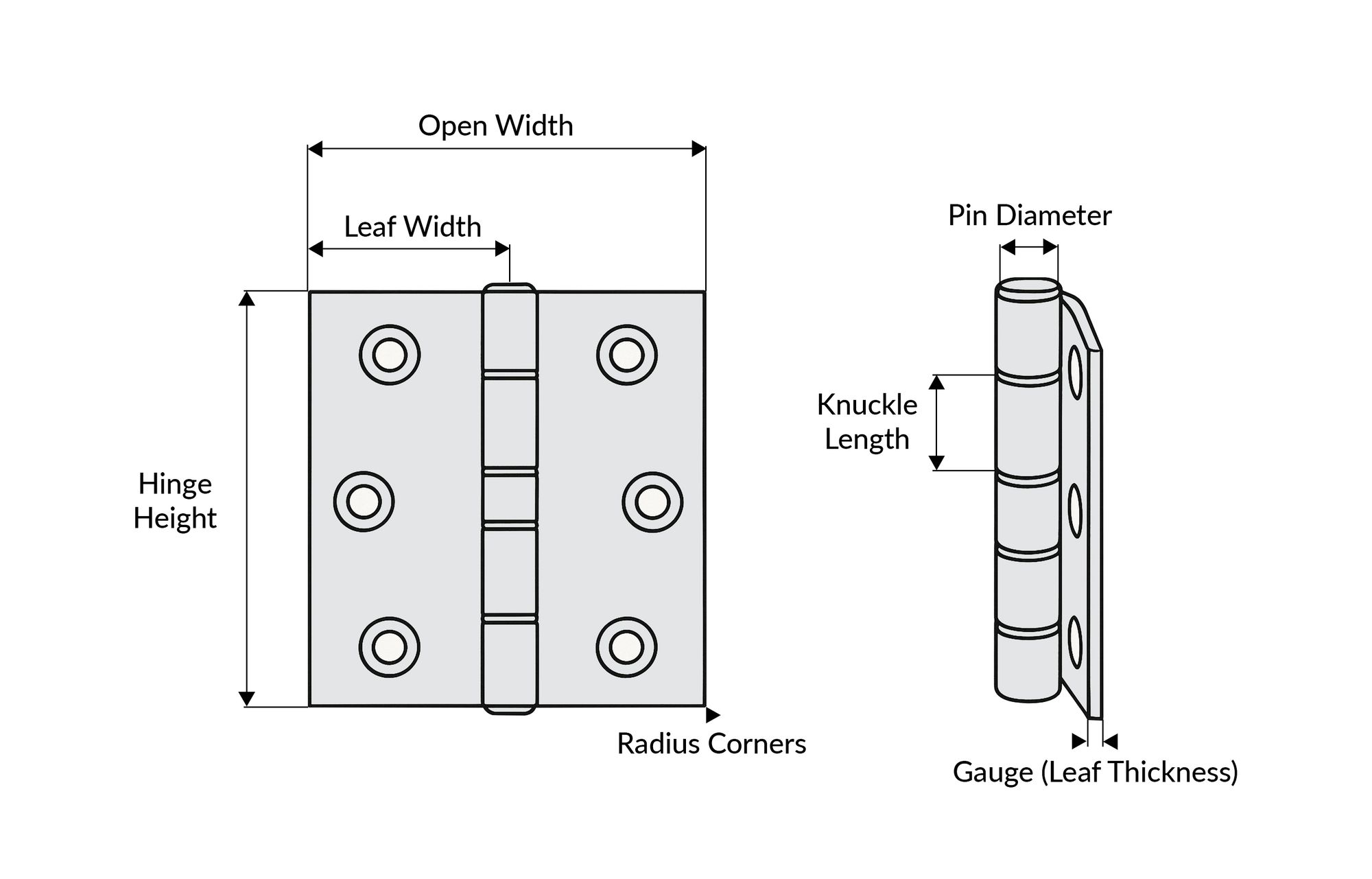
Tips for Measuring an Existing Hinge
- Remove the hinge from the door to lay it flat.
- Use a tape measure or caliper to measure height and open width.
- If the hinge is still installed, measure the visible leaf and double it to estimate open width.
- Note the corner style (square or radius) and thickness.
Whether you're replacing a standard 3.5" interior hinge or speccing for a 5" commercial-grade hinge, precision here matters. Even a small mismatch can affect door alignment, swing angle, and load capacity.
Standard Door Hinge Sizes (With Chart)
Hinge sizes aren’t one-size-fits-all. They’re engineered to support specific door types based on height, width, and weight. Selecting the correct size hinge ensures your door swings properly, stays aligned, and doesn't stress the frame over time.
Common Hinge Sizes by Application
- Interior Doors: Most standard residential interior doors (1-3/8" thick) use 3.5" x 3.5" hinges. This size supports typical bedroom, bathroom, and hallway doors up to 80" tall.
- Exterior Doors: Heavier doors, such as main entry doors or solid wood doors (1-3/4" thick), require 4" x 4" or 4.5" x 4.5" hinges for added strength and swing clearance.
- Commercial Doors: These often deal with higher traffic and weight.
- Steel or fire-rated doors commonly use 4.5" x 4.5".
- Larger doors (especially those with closers) may need 5" x 5" or even 6" x 5" ball bearing hinges for optimal support.

Hinge Size Based on Door Thickness and Width
This chart helps match physical door dimensions to hinge size. It’s especially useful during the planning stage.
Hinge Size Based on Door Weight and Use Frequency
If you're trying to prevent sagging, excessive wear, or compliance issues, use this table to select hinges that align with the door’s weight and how often it’s opened.
When and Which Wide Throw Hinges to Use?
Clearances are often overlooked, but they are critical. If your door needs to swing past thick trim or open fully against a wall, this table helps you select the right hinge width.
Note: Wide throw hinges are helpful when your door needs to open 180° or clear casing/moldings.
Cabinet Hinge Sizes
Cabinet hinges are a different category altogether. While door hinges are selected based on weight and thickness, cabinet hinges are all about positioning, overlay, and aesthetics. In most modern kitchen and furniture applications, European-style concealed hinges are the industry standard.
Understanding Euro Hinges
These are hidden from view when the cabinet door is closed, offering a clean and minimal look. The most common format includes a 35mm cup that is drilled into the back of the cabinet door.
Key specifications:
- Cup Size: 35mm is standard for most cabinet doors. A smaller 26mm cup is occasionally used for compact or lightweight doors.
Overlay Types:
- Full Overlay: Door completely covers the cabinet frame.
- Half Overlay: Two doors share the same cabinet partition and partially cover it.
- Inset: The door sits flush within the cabinet frame opening.
- Opening Angles: Range from 90° to 170°, depending on the hinge design.

Mini Cabinet Hinge Size Chart

Tips for Replacing Cabinet Hinges
- Measure the existing cup hole diameter and depth before buying replacements.
- Match overlay type exactly - changing from inset to overlay (or vice versa) often requires door or frame modification.
- Double-check the screw hole pattern and mounting plate height; even a few millimeters off can misalign the door.
- If you’re upgrading to soft-close hinges, ensure there's clearance inside the cabinet for the damper mechanism.
Many older cabinets use exposed or semi-concealed hinges. These can be upgraded with concealed hinges can be done, but it requires careful alignment and possibly new drilling.
How to Choose the Right Hinge Based on Door Size & Weight?
A hinge’s performance depends greatly on the door’s actual physical demand. To avoid sagging, premature wear, or failure, your hinge choice should be based on a combination of four key factors: door height, width, thickness, and weight.
How to Match a Hinge to Your Door Dimensions?
When choosing a hinge size, consider the door’s size and frequency of use. Here's a breakdown of what to look for:
- Door Height: Taller doors create more leverage and require stronger support. Use more hinges or taller hinges for added stability.
- Door Width: Wider doors increase torque on the hinge. Consider heavy-duty or wide-throw hinges.
- Door Thickness: Thicker doors typically weigh more and may require hinges with greater gauge (thickness) and height.
- Door Weight: Heavier doors demand ball bearing or heavyweight hinges. Always refer to weight capacity charts.
Recommended Hinges Based on Door Weight & Frequency
Select the right hinge for your door's weight and usage level using the information mentioned below.
This table provides real-world applications of hinge sizing, making it easier to match the right hinge to different types of doors across residential and commercial settings.
Number of Hinges Required For Door Heights
Choosing the right hinge size is only half the equation- the number of hinges you use is just as critical. Too few hinges can result in door sagging, compromised alignment, and uneven wear over time.
Hinge Count Guide by Door Height
As a baseline, plan for one hinge for every 30 inches of door height. This ensures proper weight distribution, especially on taller or heavier doors.
- Up to 60 inches (5 ft): Use 2 hinges
- 60 to 90 inches (5–7.5 ft): Use 3 hinges
- 90 to 120 inches (7.5–10 ft): Use 4 hinges
- Over 120 inches (10 ft+): Use 5 hinges or more, especially for oversized or heavy commercial doors
Why Hinge Count Matters
- More hinges reduce stress on each point of contact.
- For fire-rated doors, building codes may specify minimum hinge counts. You must check local requirements at your location.
- Doors with closers or high usage (e.g., in offices, schools, hospitals) benefit from an extra hinge.
Cabinet Doors Fewer Hinges
- Most small cabinet doors (under 24") only require one concealed hinge.
- Medium-sized cabinet doors (24"–36") typically need two.
- Tall pantry or wardrobe doors may require three or more, depending on height and thickness.
Shop now: Door Closers & Accessories to support heavier or automated doors.
Specialty Hinges: Wide Throw, Strap, and Pivot Hinges
Standard butt hinges aren’t always the right solution. For doors that require extended clearance, decorative mounting, or unique swing functionality, specialty hinges offer tailored solutions.
Wide Throw Hinges
Ideal when the door needs to clear thick trim, wall panels, or swing a full 180°. These are especially common for French doors, glass doors, and doors with surface-mounted casing.
Wide Throw Hinges - Sizing & Usage
- Choose a wider hinge leaf to achieve greater door swing clearance.
- Common Sizes: 4.5" × 6", 5" × 6", 6" × 6" wide throw
- Used when the door must swing around a thick wall return or casing
Use wide throw hinges on doors that need to lie flat against a wall or swing through a thick opening.
Strap Hinges
Used when aesthetics matter, such as on barn doors, gates, and carriage-style garages. They also provide strong support for wide or thick doors.
Strap Hinges - Sizes & Usage
- Measured by the length of the strap (not the hinge leaf)
- Typical Sizes: 6", 12", 18", 24" and above
- Heavier gates or wide barn doors require longer, thicker straps
For strap hinges, match the hinge material to the environment (e.g., stainless steel for outdoor gates).
Pivot Hinges
These mount at the top and bottom of the door instead of the sides, allowing heavier doors to swing more easily. Great for frameless glass doors, modern storefronts, and double-swing restaurant doors.
Pivot Hinges - Sizes & Usage
- Rated by door weight and maximum opening angle
- Light-Duty Example: Up to 125 lbs - top jamb-mounted pivot
- Heavy-Duty Example: 200-500 lbs - floor-mounted pivot system
Pivot hinges require precise installation and sometimes floor cutouts. Check if your substrate is compatible.
Frequently Asked Questions (FAQ) - Hinge Sizes
1. What does a “3.5 inch hinge” mean?
A 3.5" hinge measures 3.5 inches in both height and open width when laid flat. It's typically used for interior doors that are 1-3/8" thick.
2. Can I replace a 3.5" hinge with a 4" hinge?
Only if the door and frame can accommodate the larger size. A 4" hinge may require deeper mortises and could affect door alignment.
3. Are door hinges a standard size?
Not exactly. Common sizes include 3.5", 4", 4.5", and 5", but the right hinge depends on the door’s weight, height, and thickness. Commercial doors usually require ball bearing hinges and larger sizes.
4. What hinge should I use for a 200 lb door?
Use a 6" × 5" or 6" × 6" heavy-duty ball bearing hinge rated for high-weight doors. Consider using 4 or more hinges to distribute the load evenly.
5. What screws do I use for hinges?
- Standard wood doors: Use #9 or #10 x 1" to 1-1/4" flat head screws
- Metal doors/frames: Use machine screws sized to the hinge hole pattern
- Always use all screw holes provided to maintain structural integrity
Our screw size guide tell you more about choosing the right screw sizes for different material.
Wrapping It Up!
Choosing the right hinge involves matching the hinge to your door’s specific height, width, weight, and function. Whether you're installing a new interior door, upgrading a commercial entry, or replacing kitchen cabinet hardware, hinge selection matters.
DK Hardware carries a full range of premium-grade hinges for residential, commercial, and architectural use. Further, our team is here to help in case you are looking for assistance in finding the right hinge for your project.
For more such blogs, keep an eye on this space, subscribe to our newsletters, and follow us on Instagram, Facebook, and Pinterest for instant industry updates and ideas!



